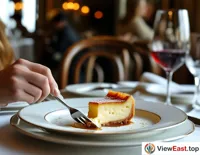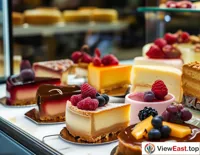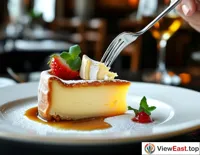






A: The Culture and Charm of Cheesecake
Cheesecake, a dessert with origins dating back to ancient Greece, has become a favorite among global dessert enthusiasts for its unique texture and rich, creamy cheese flavor. It is not just a cake but also a symbol of culture, representing innovation in desserts and the preservation of traditional flavors.
Cultural Background:
The history of cheesecake can be traced back to the 8th century BC in ancient Greece, initially created to celebrate the Olympic Games. Over time, cheesecake spread worldwide and has been adapted to regional tastes, resulting in various styles.
Suitable Groups:
Cheesecake is suitable for all age groups, especially those who have a particular preference for rich flavors. With its moderate sweetness and delicate texture, it is perfect as an afternoon tea or dessert.
Features and Taste:
The characteristic of cheesecake lies in its rich cheese flavor and smooth texture. It typically contains a large amount of cream cheese, giving the cake a strong creamy aroma. In terms of taste, it is sweet with a hint of sourness and has a dense, velvety mouthfeel, which is beloved by cheese lovers.
Appearance:
In terms of appearance, cheesecake usually features a simple and elegant design, sometimes decorated with a dusting of icing sugar or fresh fruit, maintaining a minimalist yet sophisticated aesthetic.
Nutritional Value:
Cheesecake is primarily made from cream cheese, eggs, sugar, and flour, and is rich in protein, calcium, and vitamins. Consumed in moderation, it can provide energy and satisfy a sweet tooth.
B: The Process of Making Cheesecake
Introduction to Ingredients:
The main ingredients needed to make cheesecake include: cream cheese, sugar, eggs, flour, milk, lemon juice, and vanilla extract.
Tools Required:
The tools needed to make cheesecake include: a mixer, a sifter, measuring cups, measuring spoons, a cake mold, an oven, and baking paper.
Preparation of Ingredients:
Take the cream cheese out of the refrigerator in advance and let it come to room temperature for easier mixing.
Separate the eggs into yolks and whites.
Cooking Steps:
Combine the cream cheese and sugar, and beat with a mixer until smooth and lump-free.
Add the egg yolks one at a time, continuing to beat until well combined.
Alternately add the flour and milk, stirring gently until no dry ingredients remain.
Add lemon juice to the egg whites and beat with a mixer until stiff peaks form.
Gently fold the egg white mixture into the cheese batter in several stages.
Pour the batter into a cake mold lined with baking paper, preheat the oven, and bake until a toothpick inserted comes out clean.
Seasoning Tips:
The amount of vanilla extract can be increased to enhance the aroma of the cake.
The addition of lemon juice can balance the richness of the cheese and add a fresh taste.
Serving Suggestions:
Cheesecake is best enjoyed after being chilled to maintain the best texture.
It can be paired with a cup of coffee or black tea for a perfect afternoon tea.